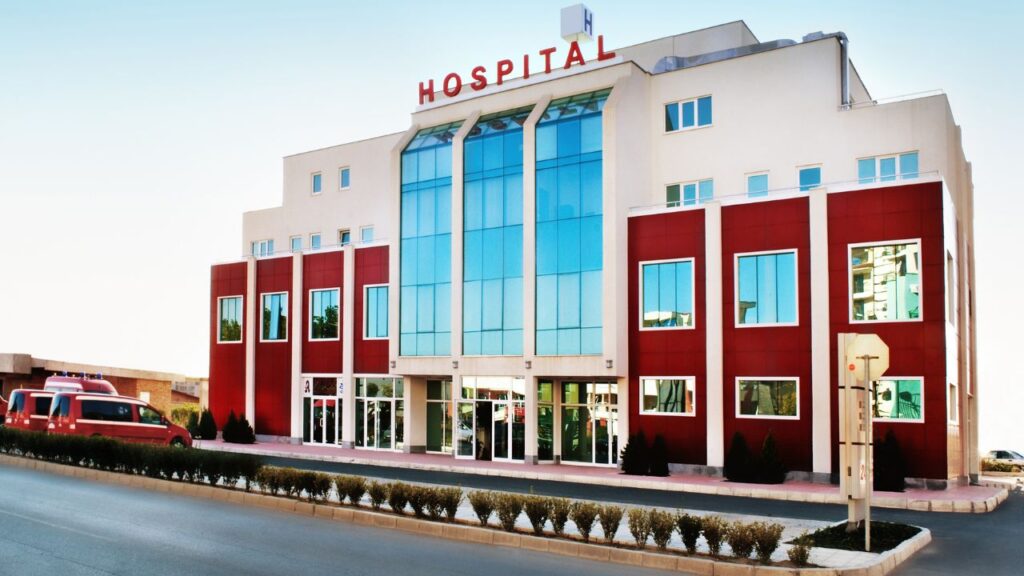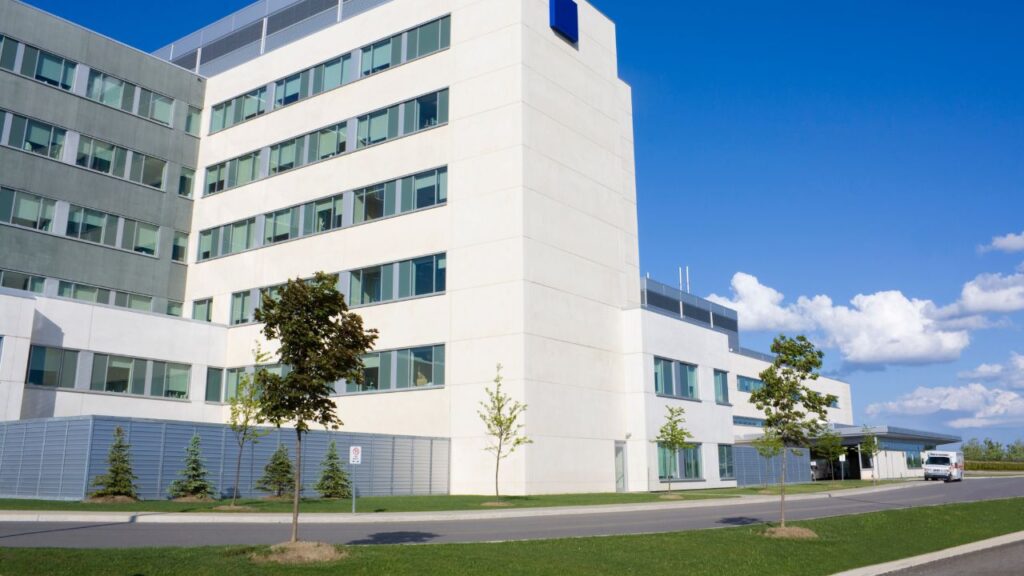Bid Strong, Bid Smart – Try Our Hospital Construction Cost Estimating Service!
- Accurancy
- Efficiency
- Transparency
- Customization
- Time Saving
- Professionalism
- Cost Control

In the realm of healthcare infrastructure, hospital sidewalks and walkways serve as vital arteries, facilitating the smooth flow of foot traffic for patients, visitors, and healthcare professionals. The choice of concrete for constructing these pathways is rooted in its durability and adaptability to various design preferences. This article explores the nuanced factors that influence the cost of hospital sidewalk and walkway concrete construction, offering valuable insights and strategies to manage costs effectively.

The intricacy of sidewalk and walkway designs stands as a pivotal factor in shaping the costs associated with their construction. When opting for intricate patterns, decorative elements, or specialized finishes, the ensuing design complexity significantly impacts project expenses. Achieving visually appealing walkways often necessitates the use of custom formwork and skilled labor, contributing to the elevation of the overall project cost. The delicate balance between realizing aesthetic aspirations and managing financial considerations becomes crucial in this context. Therefore, a nuanced approach to design complexity is paramount, demanding a strategic alignment with the budgetary constraints of the project.

Fully Insured License
Hire Contractor For Hospital Construction

Make Informed Design Decisions Showcase Your Design Ideas
Get RenderingThe size and thickness of sidewalks and walkways emerge as decisive factors dictating material and labor costs. Larger or thicker pathways inherently require a more substantial volume of concrete and reinforcement materials, directly influencing the overall project expenses. Striking a harmonious balance between the functional requirements of these pedestrian pathways and economic considerations is crucial for cost optimization. Meticulous engineering and construction practices play a vital role in navigating the intricate relationship between the dimensions of the walkway and the ensuing project costs.
The choice of concrete quality represents a pivotal decision with implications extending beyond the immediate construction phase. While high-strength and durable concrete varieties may incur higher initial costs, they contribute significantly to long-term cost-effectiveness by minimizing maintenance requirements. The selected concrete quality becomes the cornerstone of the walkway’s resilience, aligning the initial investment with the economic efficiency of the constructed infrastructure. This strategic decision involves a nuanced calibration between immediate costs and the anticipated long-term savings derived from the durability of the chosen concrete quality.
Depending on anticipated foot traffic and adherence to local regulations, sidewalks and walkways may necessitate additional reinforcement. Understanding and optimizing reinforcement needs are essential aspects of balancing structural integrity with economic considerations. A precise analysis, incorporating factors such as expected foot traffic patterns and regulatory specifications, helps prevent unnecessary expenses associated with over-engineering.

This strategic approach reflects a proactive stance, where engineers work closely with project stakeholders to tailor reinforcement plans that ensure the longevity of the walkway without inflating construction costs.
The condition of the construction site and the extent of excavation needed exert a significant impact on the overall costs of sidewalk and walkway construction. Uneven terrain or extensive preparation demands may escalate expenses, underscoring the importance of thorough site assessments during the planning phase. Proactively addressing potential challenges in site preparation emerges as a strategic and cost-saving measure. This approach ensures that the construction team is well-prepared to navigate site-specific complexities, laying the foundation for a stable and cost-effective construction process.
Weather conditions during construction are closely intertwined with timelines and costs. Adverse weather, such as rain or extreme temperatures, can pose challenges to concrete pouring and curing processes. The impact of unfavorable weather conditions may necessitate additional measures to protect freshly poured concrete, potentially adding to overall project expenses. Strategic planning to mitigate weather-related challenges becomes imperative, ensuring that the construction process remains resilient and adaptable despite external environmental factors. Weatherproofing the construction process represents a strategic imperative in maintaining project timelines and budgetary considerations.

Sidewalk Dimensions (Length x Width) | Area (Square Feet) | Cost (USD) |
10 ft x 4 ft | 40 sq ft | $480 – $720 |
20 ft x 3 ft | 60 sq ft | $720 – $1,080 |
30 ft x 4 ft | 120 sq ft | $1,440 – $2,160 |
40 ft x 5 ft | 200 sq ft | $2,400 – $3,600 |
50 ft x 6 ft | 300 sq ft | $3,600 – $5,400 |
60 ft x 4 ft | 240 sq ft | $2,880 – $4,320 |
70 ft x 3 ft | 210 sq ft | $2,520 – $3,780 |
80 ft x 5 ft | 400 sq ft | $4,800 – $7,200 |
90 ft x 4 ft | 360 sq ft | $4,320 – $6,480 |
100 ft x 6 ft | 600 sq ft | $7,200 – $10,800 |
The intricacy of sidewalk and walkway designs can significantly influence construction costs. Opting for intricate patterns, decorative elements, or specialized finishes often demands custom formwork and skilled labor, elevating overall project expenses. Streamlining design complexity becomes paramount in achieving cost efficiency, urging collaboration between architects and contractors to strike a balance between aesthetic aspirations and budget constraints.
The size and thickness of sidewalks and walkways play a crucial role in determining material and labor costs. Larger or thicker pathways inherently require more concrete and reinforcement materials, influencing overall project expenses. Striking a balance between functional requirements and economic considerations becomes imperative for optimizing costs, guiding architects and engineers in the meticulous engineering of pathways.

The choice of concrete quality is a pivotal decision with implications for both short-term and long-term costs. While high-strength and durable concrete varieties may incur higher initial costs, they contribute to long-term cost-effectiveness by minimizing maintenance requirements. The selected concrete quality becomes the cornerstone of the walkway’s resilience, necessitating a strategic approach that carefully calibrates the balance between immediate costs and future savings.
Depending on anticipated foot traffic and local regulations, sidewalks and walkways may require additional reinforcement. Understanding and optimizing reinforcement needs are essential for balancing structural integrity with economic considerations. A precise analysis helps prevent unnecessary expenses related to over-engineering, highlighting the importance of smart reinforcement planning as an integral component of cost-efficient construction.
The condition of the construction site and the extent of excavation needed significantly impact costs. Uneven terrain or extensive preparation demands may escalate expenses, emphasizing the importance of thorough site assessments during the planning phase. Proactively addressing potential challenges in site preparation becomes a strategic cost-saving measure, ensuring that the construction team is well-prepared to navigate site-specific complexities while managing costs effectively.
Weather conditions during construction are closely tied to timelines and costs. Adverse weather, such as rain or extreme temperatures, can pose challenges to concrete pouring and curing processes. Additional measures may be necessary to protect freshly poured concrete, potentially adding to overall project expenses. Strategic planning to mitigate weather-related challenges is imperative, ensuring that the project stays on course despite external environmental factors.
These cost-saving strategies collectively contribute to the efficient and economical construction of hospital sidewalks and walkways, aligning infrastructure development with fiscal responsibility in healthcare institutions.
Constructing hospital sidewalks and walkways requires a strategic balance between aesthetic appeal and financial efficiency. Factors like design complexity, dimensions, concrete quality, reinforcement needs, site preparation, and weather considerations impact costs. Cost-saving strategies include simplifying design, optimizing dimensions, choosing durable concrete, smart reinforcement planning, proactive site preparation, and weatherproofing. These measures collectively ensure the efficient and economical construction of hospital pathways, aligning infrastructure development with fiscal responsibility in healthcare institutions.
The cost is influenced by factors such as design complexity, dimensions, concrete quality, reinforcement needs, site preparation, and weather considerations.
Intricate patterns, decorative elements, or specialized finishes increase design complexity, requiring custom formwork and skilled labor, thereby elevating project expenses.
High-strength and durable concrete varieties may have higher initial costs but contribute to long-term cost-effectiveness by minimizing maintenance requirements, ensuring the walkway’s durability.
Depending on foot traffic and local regulations, sidewalks may require reinforcement. Smart planning and analysis help balance structural integrity with economic considerations.
Larger or thicker pathways require more concrete and reinforcement materials, influencing overall project expenses. Striking a balance is crucial for cost optimization.
Strategies include simplifying design, optimizing dimensions, choosing durable concrete, smart reinforcement planning, proactive site preparation, and weatherproofing, ensuring efficient and economical construction.
Here I am going to share some steps to get your hospital sidewalik and walkway concrete cost estimate report.
You can send us your plan on info@estimatorflorida.com
Before starting your project, we send you a quote for your service. That quote will have detailed information about your project. Here you will get information about the size, difficulty, complexity and bid date when determining pricing.
Our team will takeoff and estimate your project. When we deliver you’ll receive a PDF and an Excel file of your estimate. We can also offer construction lead generation services for the jobs you’d like to pursue further.



561-530-2845
info@estimatorflorida.com
Address
5245 Wiles Rd Apt 3-102 St. Pete Beach, FL 33073 United States
561-530-2845
info@estimatorflorida.com
Address
5245 Wiles Rd Apt 3-102 St. Pete Beach, FL 33073 United States
All copyright © Reserved | Designed By V Marketing Media | Disclaimer